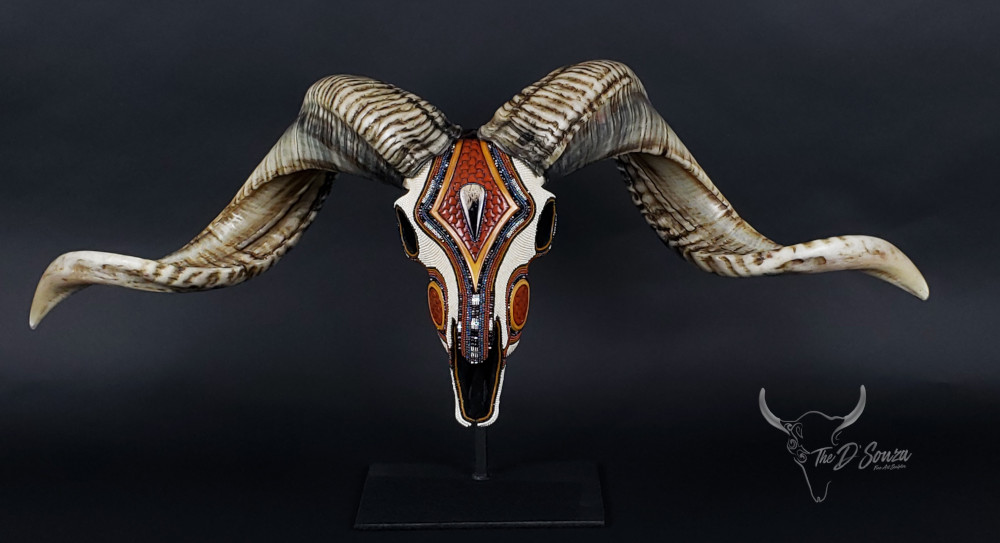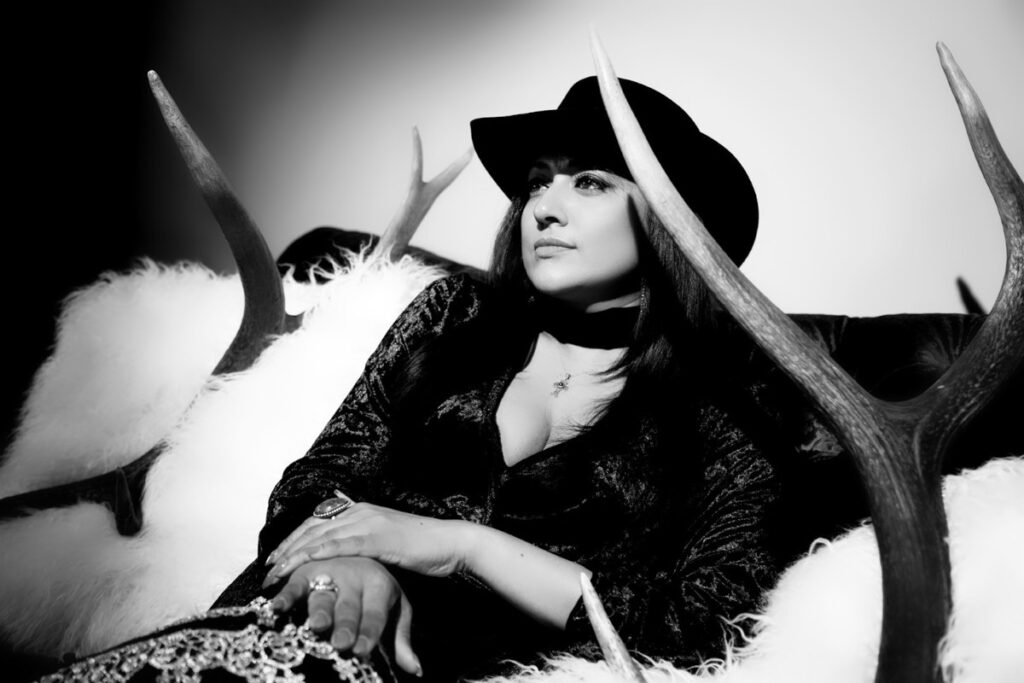
In 1917, the great American modernist painter Georgia O’Keeffe made her first excursion to New Mexico. There, amidst the state’s vast deserts and forested mountains, she found the inspiration to create some of her best-known works.
Some 93 years later, the fine art sculptor, painter and conservationist Maria D’Souza made her first trip to Wyoming. There, amidst bison and elk grazing in the alpine meadows of Yellowstone National Park, D’Souza discovered her soul.
“Everywhere I looked, I saw heaven on earth,” recalls D’Souza. “For me, this experience was nothing less than a spiritual awakening. My life hasn’t been the same since.”
The artwork of O’Keeffe and D’Souza couldn’t be more different. Still, it’s impossible not to associate the two. O’Keeffe achieved lasting fame for her modernist renderings of ram skulls. D’Souza has carved out her own niche in the world of Western art with her “Beaded Skull Art.”
These strikingly original works use the skulls of Longhorn, deer, bison and other exotic creatures as a kind of canvas. D’Souza decorates the skulls, using manufactured metal, silver, copper, leather and, most notably, colorful custom-made beads.
“All of my designs come to me spontaneously, in dreams and in visions,” insists D’Souza, who keeps a diary on her nightstand to chronicle her inspirations. “I never sketch anything out in advance. Instead, I allow the shape and contours of the skull to guide my inspiration. Ultimately, it’s the colors that determine the final creation.”
Those colors certainly resonate with viewers. Recently, a Chicago family visiting Monthaven Arts and Cultural Center (MACC) stopped in their tracks when they suddenly came upon D’Souza’s “Pinnacle Prince.” Part of the MACC’s permanent collection, this amazing work, full of shimmering color, was like nothing the family had ever seen.
Seth Hopkins, executive director of the Booth Western Art Museum in Cartersville, Ga., had the same feeling when he discovered D’Souza’s work.
“The first time I saw one of her pieces, I just said, ‘wow,’ this is something truly different,” recalls Hopkins, who leads the world’s largest permanent exhibition space for Western art. “Her art creates a beautiful and unusual balance between the natural world and the manufacturing world. That unique combination inspired us at the Booth to include her art in our permanent collection.”
For D’Souza, an ardent animal enthusiast, the process of fusing organic material with mechanical ornamentation begins with strict conservationist protocols. Her ultimate goal is to honor the life of the animal.
To do this, she collects skulls of domesticated Longhorn cattle and bison from small family farms, animal sanctuaries and parks. These are animals that have died of natural causes. She will not work with factory farms or meat-processing plants. For the mounts of wild animals, she deals exclusively with people who are state-certified to collect the skulls of animals that have also died naturally.
D’Sou za gets her spectacular two- and three-dimensional cut beads from manufacturers overseas. Having lived on five continents, the Portuguese-born D’Souza has developed a few well-placed sources in the manufacturing industry. She challenges them to produce the colors and shapes envisioned in her dreams.
za gets her spectacular two- and three-dimensional cut beads from manufacturers overseas. Having lived on five continents, the Portuguese-born D’Souza has developed a few well-placed sources in the manufacturing industry. She challenges them to produce the colors and shapes envisioned in her dreams.
“I’ve never failed to get the materials I needed for my art,” she says.
The sophistication of her art is clearly seen in “Pinnacle Prince,” from the D’Souza Original Fine Art Collection. Using a beautiful ram skull with fully curled horns, the piece features cabochons of petrified birdseye palmroot and black onyx set upon hand-tooled and dyed leather. The piece is fully beaded in custom faceted beading and Bali silver and is finished with rich black suede.
Arguably the most striking feature of any D’Souza sculpture is the mount’s horns. D’Souza spends hours using special polishing techniques to reveal an array of spectacular hidden colors.
“That’s not what the horns looked like during the animal’s life,” says D’Souza. “But it’s the quality I’m looking for in my art. It’s my way of honoring the animal and giving it a second life.”

